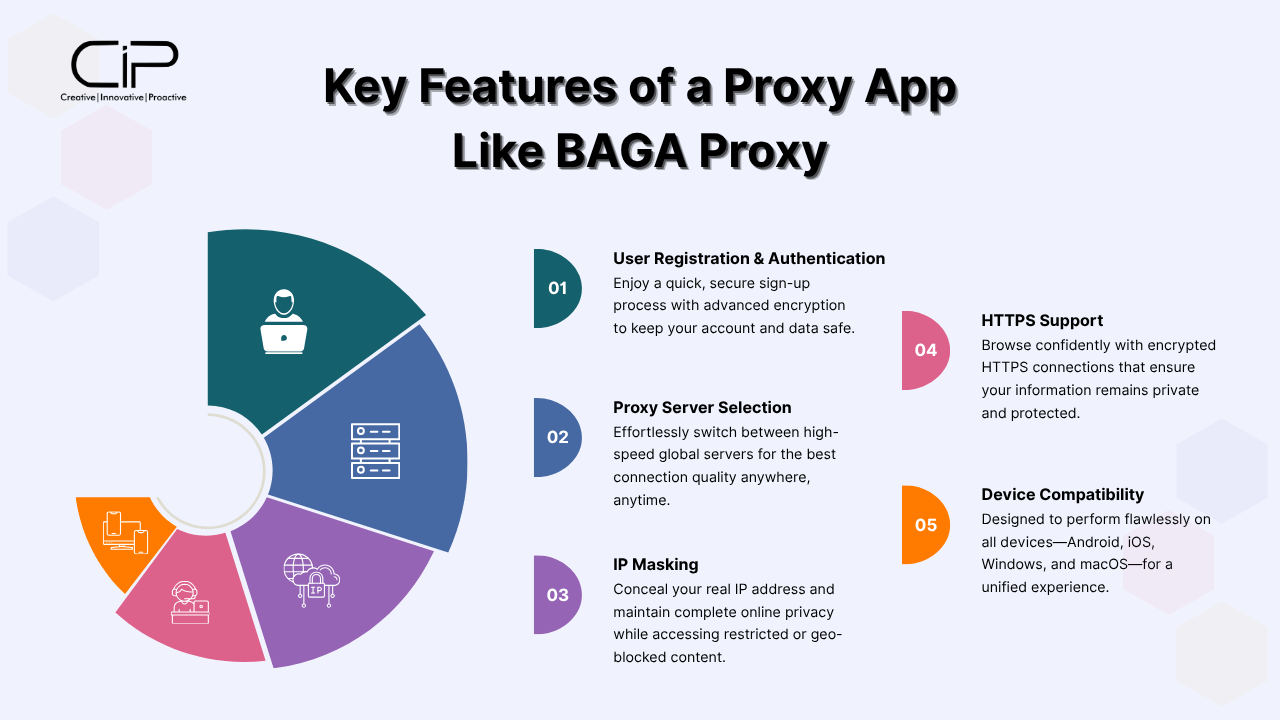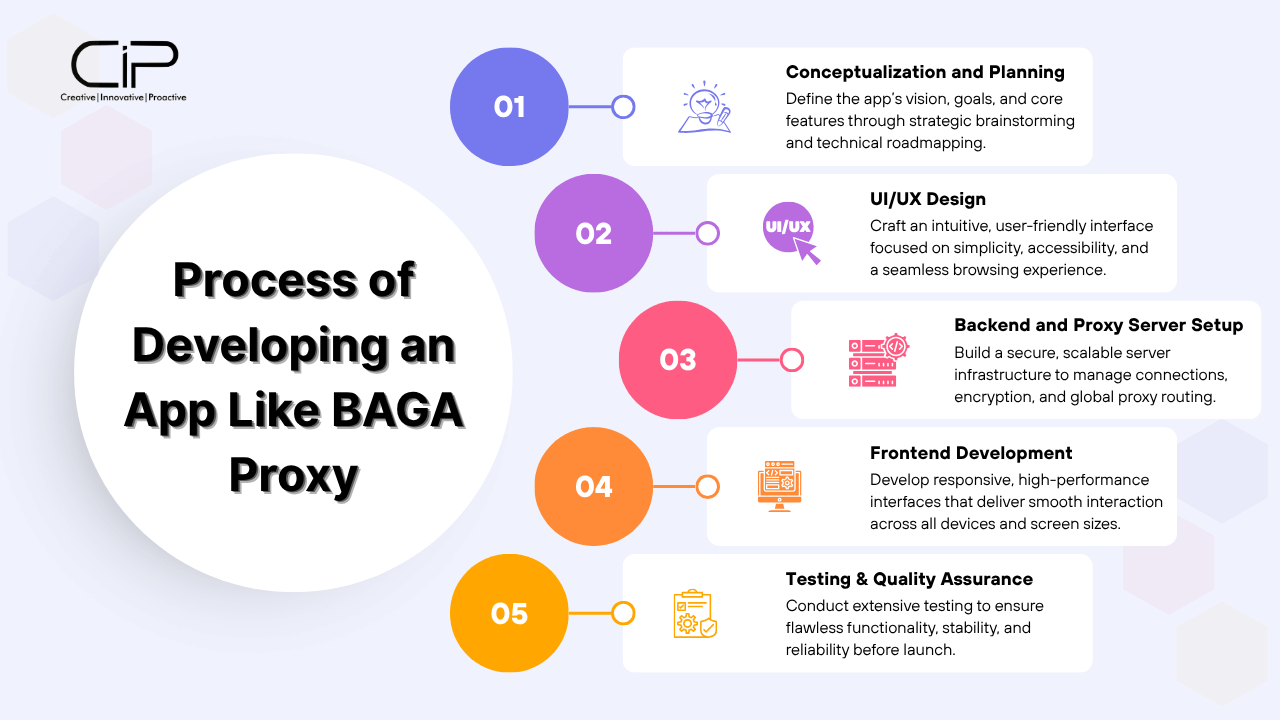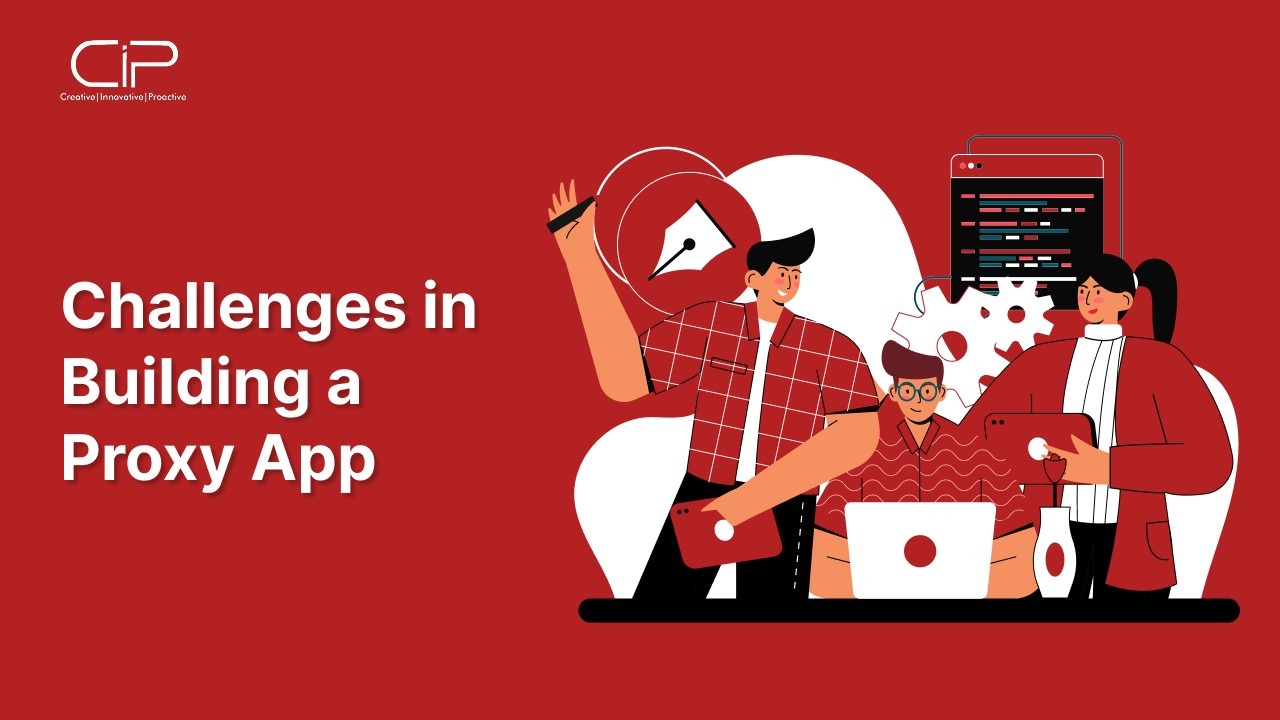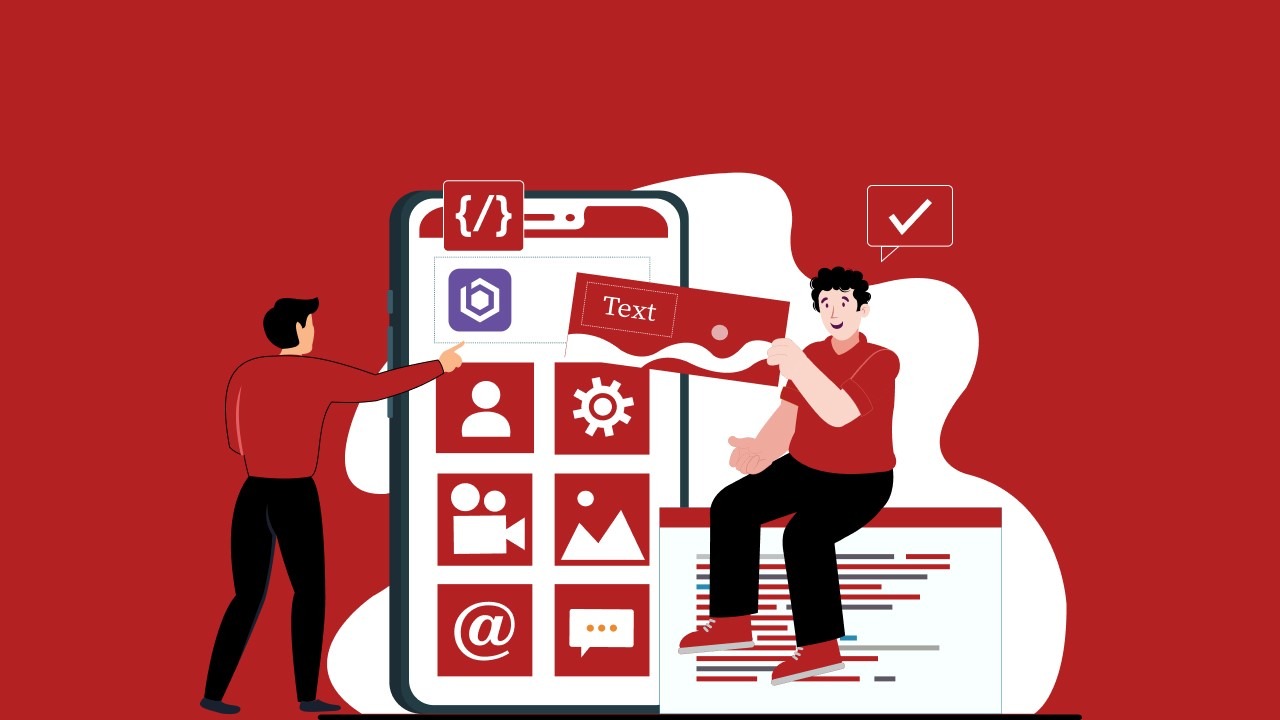n today’s digital age, internet privacy has become a concern for millions of users, where having an app like Baga proxy plays a significant role. With the increase of surveillance systems, data collection by corporations, and increasing restrictions on content based on geography, more people are looking for ways to protect their online identity and access content without limitations. A proxy like BAGA Proxy offers a solution by helping users protect their real IP addresses and access the internet securely.
These types of proxies can be the best business opportunity that easily fits into the growing need for online privacy and security. Creating these types of proxies requires a deep understanding of technology, security, user experience, and legal considerations.
In this blog, users get to know about the process of building a proxy app like BAGA Proxy by understanding its essential features and preparing for the BAGA Proxy app development challenges.
Key Features of a Proxy App Like BAGA Proxy

1. User Registration & Authentication
A secure user registration and authentication process is essential for any proxy app where users need to create accounts in a simple or safe way, by ensuring that the system keeps track of user preferences and subscription plans.
It usually has options such as sign-up that allow users to sign up by using their email address or integrate third-party authentication systems like Google, Facebook, and Apple for quick registration. Implementation of multi-factor authentication is another layer of security to protect user accounts from unauthorized access.
Besides this proxy app development guide, providing users with an easy-to-navigate dashboard that allows them to manage their subscriptions, track usage, and update personal settings is another best option.
2. IP Masking
IP masking is one of the core functions of a proxy app to ensure the real IP addresses of users remain hidden while browsing the internet. This feature plays a critical role in safeguarding users’ online privacy.
When it comes to enhanced anonymity, implementing dynamic IP switching is the best option to follow. This feature helps users prevent websites from tracking users based on their IP addresses over time.
Some users might require a dedicated IP address for specific purposes, such as accessing region-restricted services without being flagged, where the dynamic IP option plays a supportive role as a premium feature.
3. HTTPS Support
HTTPS (HyperText Transfer Protocol Secure) is an essential protocol for secure communication on the web. Proxy service supports HTTPS to ensure that all data transferred between the user and the proxy server remains encrypted and safe. Implementing the SSL/TLS certificates for secure communication is considered the best option.
This encryption ensures that sensitive user data is protected during transmission. Support for both HTTP & HTTPS ensures that the proxy servers can easily handle both traffic seamlessly.
4. Device Compatibility
Whenever it comes to maximizing the reach of an app, it’s important to offer compatibility across multiple devices and platforms.
This activity ensures protection for users’ online identity, no matter the location or what device they’re using. Develop mobile apps for both iOS and Android platforms, where they are also created for cross-platform frameworks like React Native or Flutter to speed up the development process and ensure a consistent user experience across multiple devices.
Offering the apps for Windows, macOS, and Linux users who might want to protect their browsing experience on computers. Consider offering browser extensions for Chrome, Firefox, and Safari that provide a convenient way for users to use the proxy service directly from their web browsers.
5. Connection Speed & Stability
A proxy app ensures that users will experience fast and stable connections while accessing streaming services or engaging in activities that usually require high-speed internet.
Lagging or unstable connections will drive users away, whereas these proxies ensure enhanced speed. Integrate an intelligent system that automatically selects the fastest server based on the location and current server load of the users. Ensure minimal latency and fast connection times by optimizing server infrastructure, which results in boosting the speed.
Users will appreciate streaming and browsing without buffering issues with the help of these types of proxies.
6. Encryption and Security
Usually, proxies don’t provide the same level of encryption as VPNs, but they are still considered essential by implementing some basic security features to protect user data from interception.
Use SSL/TLS encryption for all data that travels through proxy servers, which helps users to make it clear that the service adheres to a strict no-logs policy, meaning you don’t store or monitor their browsing activity.
This option builds trust and enhances the credibility of the services. Implementing security features like firewalls and anti-DDoS protection to safeguard infrastructure from external attacks also improves the security of the app.
7. Ad Blocking
Many users look for proxy services to avoid the intrusive ads and trackers that plague the modern web, where the feature of ad-blocking improves the user experience by adding another layer of privacy by preventing online advertisers from tracking user activities.
It’s best to allow users to choose which types of ads or trackers they want to block, which will enable them to have a personalized browsing experience.
The Ad Blocking Without Interference feature also ensures that the ad-blocking feature doesn’t break or interfere with the functionality of the websites that users visit. Implementing the feature of ad blocking allows for a smooth user experience with complete safety.
9. Traffic Management
Offering a traffic management feature for users on limited bandwidth or data plans is considered an important feature.
This allows users to control their data consumption and avoid overages. Bandwidth Control feature implementation in the app will enable users to set limits or track their bandwidth usage so that users don’t hit data caps or experience throttling.
The Data Usage Analytics feature works by providing real-time analytics on how much data users have consumed and their estimated remaining bandwidth.
Why building an App Like BAGA Proxy is important?
With the growth of surveillance, data mining, and online tracking, protecting user privacy has become a priority for many users.
More of them are seeking to get help from tools like proxy services to get safety from online tracking and their personal information from malicious third parties.
Proxy services enable users to transfer geo-restrictions and access content from any place in the world, making it a popular solution for accessing region-locked content.
Due to the growing demand for privacy tools, it offers excellent monetization opportunities where adopting the freemium model allows users to enjoy the basic features for free.
They can also choose the premium plans with additional features like faster speeds, dedicated proxies, or enhanced security. It also allows users to generate revenue through affiliate marketing and partnerships by delivering subscription-based models.
What is the Process to Develop An App Like BAGA Proxy?

1. Conceptualization and Planning
Start by determining the primary purpose of developing the app, like a proxy, whether it’s about unlocking content, security, or anonymity.
Once core functionality is defined, identify the target audience of the app and their requirements with a proxy, such as data security.
Research into competitor apps, legal regulations, and technological constraints is also supportive in establishing a clear vision. During planning, it’s suggested to map out the user stories, functionalities like browsing privacy, geo-restriction bypassing, and the app’s architecture.
A comprehensive outline is created for developing a proxy, ensuring that each phase of development aligns with the overall business goals. Proper planning plays a significant role in mitigating the risks and streamlining the development process.
2. UI/UX Design
UI & UX design is another crucial step of concern, like “How to create a proxy app”, where it focuses on creating an intuitive and seamless user experience.
Wireframes and prototypes are developed to showcase the layout, navigation, and overall visual appeal of the app.
UI (User Interface) ensures the design is aesthetically pleasing, while UX (User Experience) provides a guarantee for users to navigate effortlessly by understanding ways to use the proxy like a mobile app development company.
The design must be responsive, accessible, and optimized for different screen sizes and platforms. It’s suggested for testing and feedback loops to refine the design to meet user needs and expectations by contributing to higher retention and engagement on the app.
3. Backend and Proxy Server Setup
Once the UI/UX design is completed, follow the next step of backend VPN and proxy app development that involves setting up the core server infrastructure that handles overall data requests, authentication, and proxy operations.
A proxy server works as an intermediary, forwarding user requests while covering their IP addresses.
The backend includes server management, load balancing, and data encryption for user protection. Proper APIs are usually developed to interact with the front end. Scalability, performance, and security are critical to ensure smooth handling of large traffic volumes. Following Proxy app UI/UX design tips and some popular technologies like Node.js, Python, or Go are considered the best options for use in Proxy app backend setup.
4. Frontend Development
This frontend development usually focuses on the client-side of the development, where users interact with the app, including writing code to create a dynamic, responsive interface that connects to the backend server.
Therefore, some technologies available, like React Native, Flutter, or JavaScript frameworks, are used for building mobile and web apps.
The frontend ensures smooth interactions, including features such as logging in, selecting proxy servers, and customizing settings. Integration with the backend must be seamless, ensuring data flows correctly from the server to the user interface.
5. Security and Privacy Implementation
Security and privacy are considered paramount in the proxy app when implementing strong encryption protocols like SSL or TLS to protect the user data. Authentication mechanisms, such as multi-factor authentication, help in securing the user accounts.
The app should also anonymize IP addresses to protect users’ identities and prevent data leaks. Following some other proxy browser app security features measures, like firewalls and DDoS protection, works as a safeguard for the infrastructure.
Regular audits and updates are essential to addressing the vulnerabilities. Ensuring compliance with data protection regulations adds an extra layer of privacy, fostering user trust.
6. Testing & Quality Assurance
Testing and quality assurance usually involve verifying that the app functions are intended perfectly, including processes like unit tests, integration tests, and user acceptance testing.
Performance testing ensures the proxy app can handle a large volume of requests without crashing.
Security tests assess vulnerabilities and ensure data protection protocols work correctly.
QA teams usually perform manual testing to identify bugs or glitches in the user experience of the application. A robust testing phase ensures the app is stable, reliable, and properly meets all requirements before release.
Challenges to be Faced While Building a Proxy App

Developing a proxy app like BAGA Proxy is considered a challenging task. One significant hurdle is ensuring scalability as user traffic increases; the proxy server must have the ability to handle large amounts of data without performance degradation.
Load balancing and infrastructure scaling solutions are important for maintaining quality. Proxy apps deal with sensitive user data, requiring robust encryption and secure protocols.
These proxies also support in safeguarding users’ data from cyberattacks and data breaches, and maintaining privacy.
This approach is considered important while dealing with IP masking. Legal and regulatory compliance is also a key concern, where some countries have strict laws on internet usage, data collection, and user anonymity. The app needs to avoid violation of any local or international regulations regarding privacy and internet access.
Additionally, latency and performance can be affected by geographic distances between proxy servers and end-users.
Ensuring fast and reliable access where these factors require a network of well-distributed servers, where users’ trust and privacy are important for audience retention.
Proxy apps usually deal with the most sensitive information of users, which is important for maintaining transparency about data handling practices and providing clear privacy policies to build trust.
Conclusion
Building an app like BAGA Proxy requires a structured approach, from concept to deployment. Proper planning, intuitive design, secure backend infrastructure, and comprehensive testing ensure that the app delivers a seamless and secure proxy experience.
There are also some significant challenges that developers face, like scalability, legal compliance, and security, but overcoming these results in making a proxy with the help of a reliable Android app development company is quite beneficial.
By focusing on user privacy, maintaining strong security measures, and continually testing the app, developers need to ensure long-term success and user satisfaction. With the enhancement in demand for privacy and internet freedom, well-built proxy apps have the potential for a significant impact.
Frequently Asked Questions ( FAQs )
1. What is BAGA Proxy, and why would I want to build an app like it?
BAGA Proxy is a tool that allows users to bypass internet restrictions and surf the web securely and privately by masking their IP address. Suppose you want to build an app like BAGA Proxy. In that case, it’s likely because there’s a demand for secure, anonymous internet browsing in regions with internet censorship, or for privacy-conscious users who want to protect their data.
2. What technologies are required to build an app like BAGA Proxy?
To build a proxy app like BAGA Proxy, users need expertise in networking protocols (HTTP, HTTPS, SOCKS), secure communication (TLS/SSL), and proxy browser app development(Android/iOS). A proxy app using Node.js and Flutter, and a server setup with VPS or cloud services (AWS, DigitalOcean) would also be essential to manage the proxy servers.
3. How do you ensure security and anonymity for users?
Security can be ensured by using encryption (SSL/TLS) to protect the data from being intercepted. Anonymity is achieved by masking the user’s IP address and routing their traffic through a secure server. Additionally, the app must not store any logs or user data to ensure full anonymity, adhering to privacy laws and best practices.
4. How can I scale my app to handle large user bases?
To scale, you can deploy your proxy servers across multiple geographic locations, leveraging cloud services for load balancing and redundant server setups. Using technologies like Docker, Kubernetes, and auto-scaling can help you manage large traffic volumes efficiently. Caching and content delivery networks (CDNs) can also optimize performance.
5. What are the legal implications of building a proxy app like BAGA Proxy?
Building a proxy app comes with legal challenges, especially regarding internet censorship and bypassing geo-restricted content. Some countries have strict laws around VPNs and proxy services, so you must ensure compliance with local regulations and privacy laws. It’s also important to include terms of service that clarify how your app should and should not be used.













